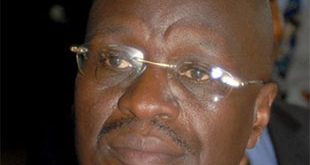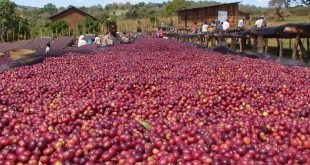
By Flavia Nassaka
Looking beyond the massive deployment and violence-wary population
One of the tensest moments of the Feb. 18 presidential and parliamentary elections came just hours after the polls closed on Feb. 19. It was early morning and the chairman of the Electoral Commission, Badrukigundu, had earlier announced that with 83% of the votes counted, the incumbent president YoweriMuseveni had 61% and his main challenger, the FDC candidate Kizza Besigye had 34%.
Suddenly and quietly, trucks loaded with soldiers could be seen creeping into strategic positions in many city suburbs. For the first time in decades, roadblocks manned by security operatives sprung up on the main highways leading in and out of the city. The pattern was repeated across the major roads and towns across the country.
Long columns of heavily armed soldiers wearing red berrets, replacing the armed policemen who had been patrolling the streets in their blue camouflage uniforms accompanied by baton wielding crime preventers in their shiny new black boots and over-sized khaki uniforms.

Kampala suddenly looked like what it had been all along, a city in lockdown for the election. Gayaza Road, a route that leads to Besigye’sKasangati home commonly called Benghazi, was flooded with soldiers.
By Feb. 20, the day when the Electoral Commission declared that Museveni had won the elections, the streets were eerily empty. Except for down Kisekka Market, a haven of anti-Museveni protesters who were itching to implement Besigye’s rallying cry of defiance. They attempted it – first by puncturing the tyres of army patrol truck that stopped in their area, attacking reinforcements sent in aboard a Chinese-made Jiefang truck, and setting up barricades used discarded boards, boxes, and old tyres that they set alight.
Unlike in the past, however, that appeared to be exactly what the security forces had been waiting for. As if out of nowhere, soldiers and the police swarmed all over the narrow road and surrounding alleys. With so few people in town, courtesy of a long string of public holidays and school holidays, the protesters had nowhere to hide and were picked up like panting fish out of water.
Unlike in the past, when police concentrated on running battles with protesters and arresting them, this time strategy appears to be on quickly identifying and immobilising the leaders.
Farther away, the Najanankumbi headquarters of Besigye’s FDC party along Entebbe Road was raided by security personnel when the top leadership attempted to hold a meeting. The FDC party President Gen. Mugisha Muntu, a senior official Ingrid Turinawe, and the chairman, Wasswa Biriggwa, were bundled into a waiting police van.
Police accused them of attempting to announce contradictory results to the official ones. The offices were soon drenched in blue coloured water by anti-riot cannon trucks, and teargas from an overhead helicopter. The show of force was unprecedented.
Soon, the FDC supporters who had attempted to prevent police from entering the offices, and kept hurling stones and other projectiles at them, were dispersed.
In Ntungamo, a similar operation by Special Forces Command soldiers who guard President Museveni arrested over 20 people on Election Day. Some were left injured after a car of one of the parliamentary contestants, Gerald Karuhanga, was attacked.
In Jinja Municipality, there was a similar rapid response when supporters of the loser in the parliamentary race, incumbent MP Paul Mwiru, attempted to protest the results. An unprecedented column of soldiers and APCs quickly shoved them out of the way. In Iganga, the police had to shoot in the air to disperse those celebrating an early win.
Commenting on the rapid show of shock and awe, the Deputy Spokesperson of the Police, Polly Namaye, told journalists that the security forces were not taking any chances this time.
“The protests were small,” she said, “but small things can become big things and we are not going to allow that.
“We can’t wait for them to break the law and then we act.”
Namaye’s comments were an echo of what Museveni had been repeating over and over again.
Before the elections, as fear mounted that the multitudes of youth thronging Besigye’s rallies would heed his call for defiance marches on streets across the country, Museveni kept repeating that there would be no violence.
On Feb. 21, he made the same statement and, this time elaborated.
“We have built a strong state,” he said, “Imagine we were able to mobilise 87,000 police for the elections alone. Where will anyone pass to cause trouble?”
Museveni was right but he exaggerated. The Uganda police has a full force of 47,000. To make up the 87,000 numbers, they co-opted the army, prisons, and legions of so-called crime preventers – legions of scarecrow boys and girls trained for a few weeks and given uniforms, no guns, and a few batons. In the end, Police Spokesperson, Fred Enanga, told The Independent they deployed 150,000 security personnel.
That is a huge number. So how come the display of force was this time not as brutal as in 2006, or as visible as in 2011?
Shift in strategy
According to Enanga, the security master plan was based on lessons from 2011. The security institutions – police, army, Prisons, and the intelligence organs, formed a joint operational command dividing up the country into 27 regions.
To implement this plan, in December last year, the Budget Committee of Parliament approved an extra budget of Shs51.1 billion for police. They acquired 85 patrol trucks, 1600 motor cycles, and 48 units of firefighting equipment, concrete mixtures, ambulances, and earth moving equipment among others.
Gen. Kale Kayihura, the chief of police who oversaw everything, is a disciple of the display of force to intimidate his targets into fear of what could befall them if he is provoked. He will huff and puff on radio and TV and bulge his biceps aka hardware. In 2011, when he imported hardware for the election, he made sure the convoy moved in broad daylight from Mombasa and had a lap of honour across Kampala city.
This time was different. The dominating doctrine appears to still be a show of force but this time matched with rapid domination. Instead of Kayihura issuing stern warnings on radio and TV, it was the army Chief of Defence Forces, the usually amiable Gen. Katumba Wamala who mostly spoke. His presence alone sent a signal. Averting election violence was not just police. It was a military operation. When youth attempted to riot in Wandegeya, a downtown city suburb, security operatives showed they mean business. They shot dead one of them.
Even the deployment matched the strategy. Instead of matching into position in broad daylight, the men in green stayed in the shadows but with their fingers on the trigger.
Launching pads of riot police, armed personnel carriers, brand new Toyota trucks, and rapid response motorbikes were scattered in out of the way station – ready to pounce at short notice.
The force that reinforced the siege on the FDC headquarters on Entebbe Road came from the other side of town; from Kira Police barracks. The force that picked up Besigye when he took journalists was a rapid response unit headed by Commissioner Benson Oyo-Nyeko from Interpol. The deployment was flexible. Andrew Felix Kawesi from the human Resource directorate oversaw the siege on FDC’s headquarters. James Ruhweza, who oversaw operations against Besigye’s Walk to Work protest in 2011 was recalled to Kampala duty. Even tainted officers like Aaron Baguma, who is accused of murdering a civilian, were give prominent roles.
Suspects hotspots like Kampala were isolated in a divide and control operation. The strategy was to ensure that elections are completed quickly in the safe areas, and the forces deployed their moved quickly to the hotspots.
All over the country, residents along major highways spoke of convoys moving soldiers deep in the night of Feb.19.
But the fatal blow against Besigye’s defiance campaign was inflicted by Besigye himself when he kept reminding voters to get ready for the worst violence after the election. Most human being can be violent when cornered, but many will avoid violence when given options. Besigye’s scare tactics, instead of preparing people for defiance protests, ensured that people made plans for their safety. For the first time, bus and taxi fares soared as hoards fled urban hotspots like Kampala for faraway rural safe havens. To maximise force, the security forces ensured all social media platforms—Twitter, Facebook, Whatsapp and all mobile money transfer platforms were shutdown.
In the end, Enanga told The Independent, although this election has been the most competitive when compared to the previous ones that they have policed, this has been the least marred with violence. But it is still early days – possibly.
 The Independent Uganda: You get the Truth we Pay the Price
The Independent Uganda: You get the Truth we Pay the Price



